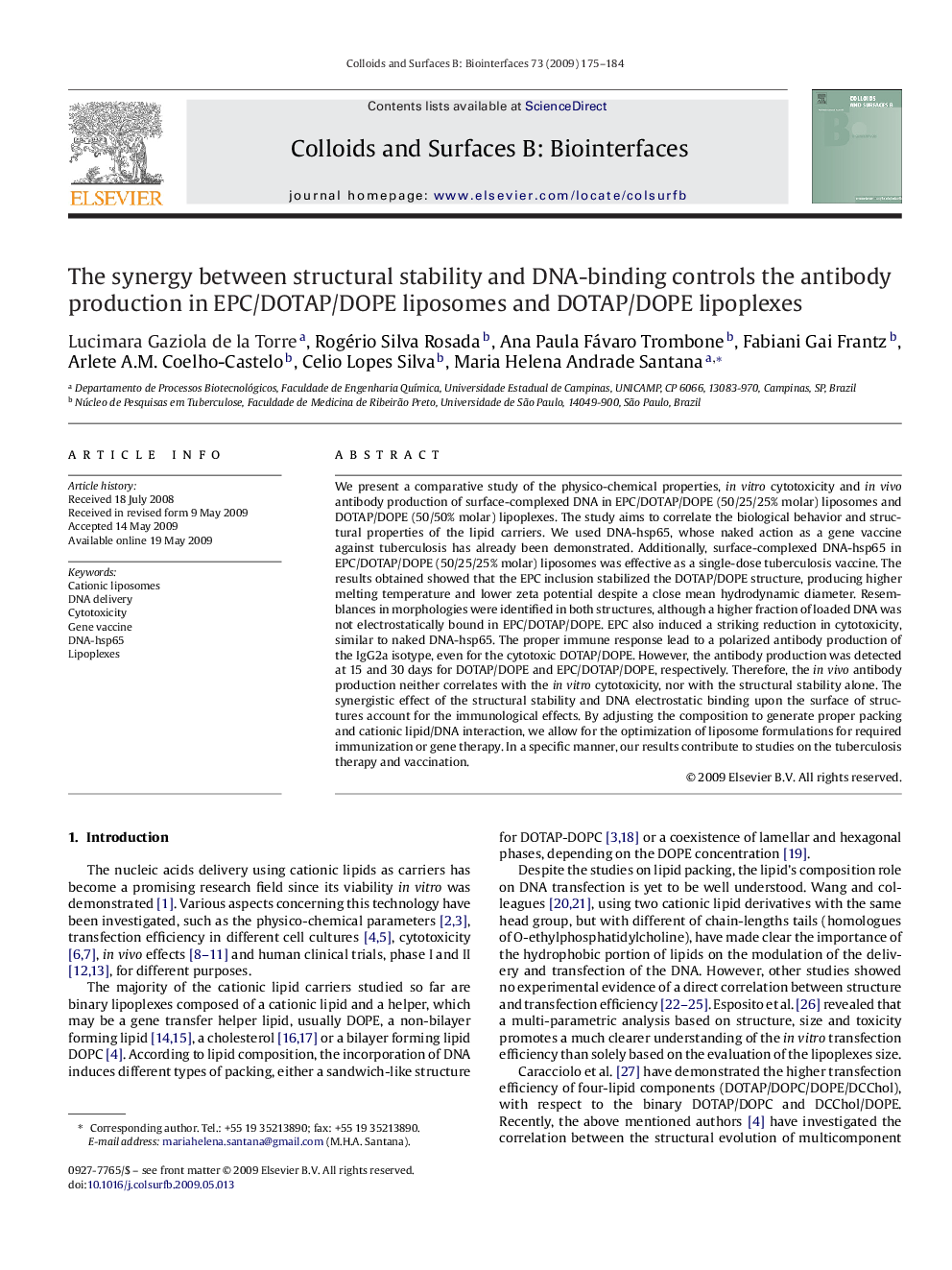| Article ID | Journal | Published Year | Pages | File Type |
|---|---|---|---|---|
| 602116 | Colloids and Surfaces B: Biointerfaces | 2009 | 10 Pages |
We present a comparative study of the physico-chemical properties, in vitro cytotoxicity and in vivo antibody production of surface-complexed DNA in EPC/DOTAP/DOPE (50/25/25% molar) liposomes and DOTAP/DOPE (50/50% molar) lipoplexes. The study aims to correlate the biological behavior and structural properties of the lipid carriers. We used DNA-hsp65, whose naked action as a gene vaccine against tuberculosis has already been demonstrated. Additionally, surface-complexed DNA-hsp65 in EPC/DOTAP/DOPE (50/25/25% molar) liposomes was effective as a single-dose tuberculosis vaccine. The results obtained showed that the EPC inclusion stabilized the DOTAP/DOPE structure, producing higher melting temperature and lower zeta potential despite a close mean hydrodynamic diameter. Resemblances in morphologies were identified in both structures, although a higher fraction of loaded DNA was not electrostatically bound in EPC/DOTAP/DOPE. EPC also induced a striking reduction in cytotoxicity, similar to naked DNA-hsp65. The proper immune response lead to a polarized antibody production of the IgG2a isotype, even for the cytotoxic DOTAP/DOPE. However, the antibody production was detected at 15 and 30 days for DOTAP/DOPE and EPC/DOTAP/DOPE, respectively. Therefore, the in vivo antibody production neither correlates with the in vitro cytotoxicity, nor with the structural stability alone. The synergistic effect of the structural stability and DNA electrostatic binding upon the surface of structures account for the immunological effects. By adjusting the composition to generate proper packing and cationic lipid/DNA interaction, we allow for the optimization of liposome formulations for required immunization or gene therapy. In a specific manner, our results contribute to studies on the tuberculosis therapy and vaccination.
